
Scouting in Massachusetts includes both Girl Scout (GSUSA) and Boy Scouts of America (BSA) organizations. Boy Scouts of America was founded in the 1910s in Massachusetts. Girl Scouts USA was founded in 1912, by Juliette Gordon Low. With a vigorous history, both organizations actively serve thousands of youth in programs that suit the environment in which they live.

Russell is a town in Hampden County, Massachusetts, United States. The population was 1,643 at the 2020 census. It is part of the Springfield, Massachusetts Metropolitan Statistical Area.

Philmont Scout Ranch is a ranch located in Colfax County, New Mexico, United States, near the village of Cimarron; it covers 140,177 acres (56,728 ha) of wilderness in the Sangre de Cristo Mountains on the east side of the Cimarron Range of the Rocky Mountains. Donated by oil baron Waite Phillips, the ranch is owned and operated by the Boy Scouts of America. It is a National High Adventure Base where crews of Scouts and Venturers take part in backpacking treks and other outdoor activities. By land area, it is one of the largest youth camps in the world. During the 2019 season, between June 8 and August 22, an estimated 24,000 Scouts and adult leaders backpacked through the Ranch's extensive backcountry. That same year 1,302 staff were responsible for the Ranch's summer operations.

The Boys' Brigade (BB) is an international interdenominational Christian youth organisation, conceived by the Scottish businessman Sir William Alexander Smith to combine drill and fun activities with Christian values. Following its inception in Glasgow in 1883 the BB quickly spread across the United Kingdom, becoming a worldwide organisation by the early 1890s. As of 2018, the Boys' Brigade claimed 750,000 members in 60 countries.

West Springfield is a city in Hampden County, Massachusetts, United States. It is part of the Springfield, Massachusetts Metropolitan Statistical Area. The population was 28,835 at the 2020 United States Census. The city is also known as "West Side", in reference to the fact that it is on the western side of the Connecticut River from Springfield, a fact which played a major part in the town's early history.
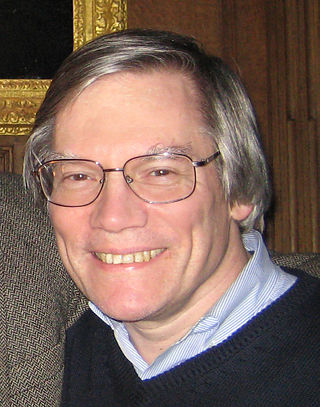
Alan Harvey Guth is an American theoretical physicist and cosmologist who is the Victor Weisskopf Professor of Physics at the Massachusetts Institute of Technology. Along with Alexei Starobinsky and Andrei Linde, he won the 2014 Kavli Prize "for pioneering the theory of cosmic inflation." Guth's research focuses on elementary particle theory and how particle theory is applicable to the early universe.
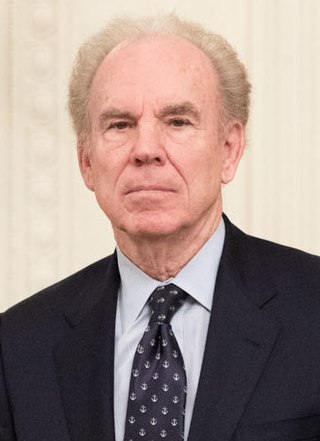
Roger Thomas Staubach, nicknamed "Roger the Dodger", "Captain America", and "Captain Comeback", is an American former football quarterback who played in the National Football League (NFL) for 11 seasons with the Dallas Cowboys. He attended the U.S. Naval Academy, where he won the 1963 Heisman Trophy playing for the Midshipmen. After graduation, he served in the U.S. Navy, including a tour of duty in Vietnam.
JAWorldwide is a global non-profit youth organization. It was founded in 1919 by Horace A. Moses, Theodore Vail, and Winthrop M. Crane. JA works with local businesses, schools, and organizations to deliver experiential learning programs in the areas of work readiness, financial literacy, and entrepreneurship to students.
The Concord Monitor is the daily newspaper for Concord, the state capital of New Hampshire. It also covers surrounding towns in Merrimack County, most of Belknap County, as well as portions of Grafton, Rockingham and Hillsborough counties. The Monitor has several times been named as one of the best small papers in America and in April 2008, became a Pulitzer Prize winning paper, when photographer Preston Gannaway was honored for feature photography.

Stephen Davison Bechtel Jr. was an American billionaire, businessman, civil engineer, and co-owner of the Bechtel Corporation. He was the son of Stephen Davison Bechtel Sr. and grandson of Warren A. Bechtel, who founded the Bechtel Corporation. He was known for expanding the global footprint of the corporation through several of its international projects. Some of the projects executed under his leadership of the company included King Khalid International Airport in Riyadh as well as Jubail Industrial City in Saudi Arabia as well as oil platforms in the North Sea, liquefied natural gas plants in Algeria, Indonesia and the United Arab Emirates.

John Aspinwall Roosevelt II was an American businessman and the sixth and last child of U.S. President Franklin D. Roosevelt, and his wife, Eleanor Roosevelt.
Vernon Benjamin Mountcastle was an American neurophysiologist and Professor Emeritus of Neuroscience at Johns Hopkins University. He discovered and characterized the columnar organization of the cerebral cortex in the 1950s. This discovery was a turning point in investigations of the cerebral cortex, as nearly all cortical studies of sensory function after Mountcastle's 1957 paper, on the somatosensory cortex, used columnar organization as their basis.
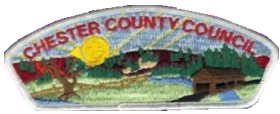
The Chester County Council is a Boy Scouts of America service council that serves members of the Cub Scouts, Scouts BSA, and Venturing programs in Chester County, Pennsylvania and Northeastern Cecil County, Maryland. It is one of the oldest councils in the nation, and is one of two single-county councils left in Pennsylvania, the other being Chief Cornplanter Council in Warren, PA.
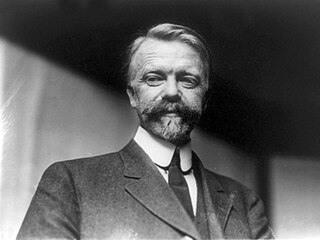
Luther Halsey Gulick Jr. (1865–1918) was an American physical education instructor, international basketball official, and founder with his wife of the Camp Fire Girls, an international youth organization now known as Camp Fire.
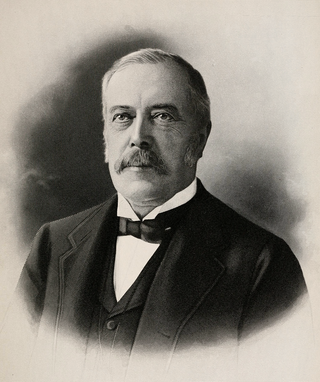
William Whiting was an American businessman and politician from Holyoke, Massachusetts. Whiting descended from an English family who first settled in Lynn, Massachusetts, during 1636.

Moses Yale Beach was an American inventor, entrepreneur, philanthropist and publisher, who founded the Associated Press, and is credited with originating print syndication. His fortune, as of 1846, amounted to $300,000, which was about 1/4 of the fortune of Cornelius Vanderbilt at the time, and was featured in a book that he published named the Wealthy citizens of the City of New York.
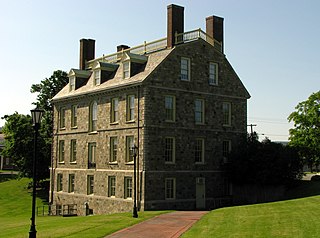
The Hancock House is an historic structure in Ticonderoga, New York. It is a replica of the Hancock Manor on Boston's Beacon Hill that was the residence of Thomas Hancock, the uncle of Founding Father John Hancock.
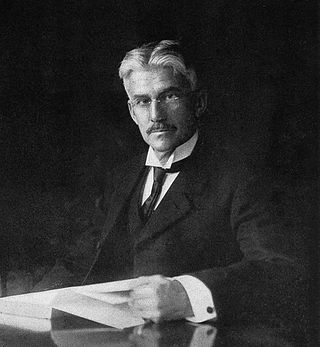
The Munsell Color Company was founded by Albert H. Munsell in 1917 with two other stockholders, Arthur Allen and Ray Greenleaf. It was located at Boston, Massachusetts. This company was manufactured to carry on business by publishing books, selling color supplies for schools such as crayons, water colors, paper colors and school supplies and to teach the principles of Munsell Color System. After the death of Albert H. Munsell, his son, Alexander Ector Orr Munsell, was convinced to take over the company and reorganized it, renamed as the Munsell Color Foundation. The Munsell Color Foundation moved to New York for educational purposes and established the Munsell Research Laboratory which was funded by the Munsell family. A few years later, the Munsell Color Foundation and the Laboratory moved to Baltimore, Maryland, to be close to the National Bureau of Standards and Johns Hopkins University. Alexander Munsell contributed his times attending to Johns Hopkins University and under the guidance from I. G. Priest, in order for Alexander continuing researching on his father's works. In 1983, the Foundation trustees had voted to close Munsell Color Foundation and donated to Rochester Institute of Technology, from which it created the Munsell Color Science Laboratory.

Doing business as D. H. & A. B. Tower, brothers David Horatio Tower and Ashley Bemis Tower were internationally known American architects, civil and mechanical engineers based in Holyoke, Massachusetts, who designed mills and factories in the United States from Maine to California as well as abroad, including in Canada, Mexico, Germany, Brazil, the United Kingdom, India, China, Japan, and Australia. By the time of its dissolution, the firm was described by one contemporary account as "the largest firm of paper mill architects in the country at that time"; its files reportedly contained more than 8,000 architectural plans for sites, mill machinery, and waterpower improvements.

Clark W. Bryan was a publisher, writer, poet, and journalist who is best known today for creating the home economics magazine Good Housekeeping that he would manage from 1885 until his death in 1899, during which time he published more than a hundred of his own poems in its issues. Prior to this, Bryan was extensively involved in the reorganization of the Springfield Republican as editorial and business partner to Samuel Bowles, following the death of Bowles' father; Bryan entered the business in 1852 serving as partner in the paper's printing firm Samuel Bowles and Co. Upon Bowles' dissolution of the partnership with himself and several other minor shareholders in his paper's printing business, Bryan went on to rechristen it the Clark W. Bryan & Co., which purchased and expanded the Springfield Union from 1872 to 1882 when it was sold to its editor-in-chief Joseph Shipley.



















